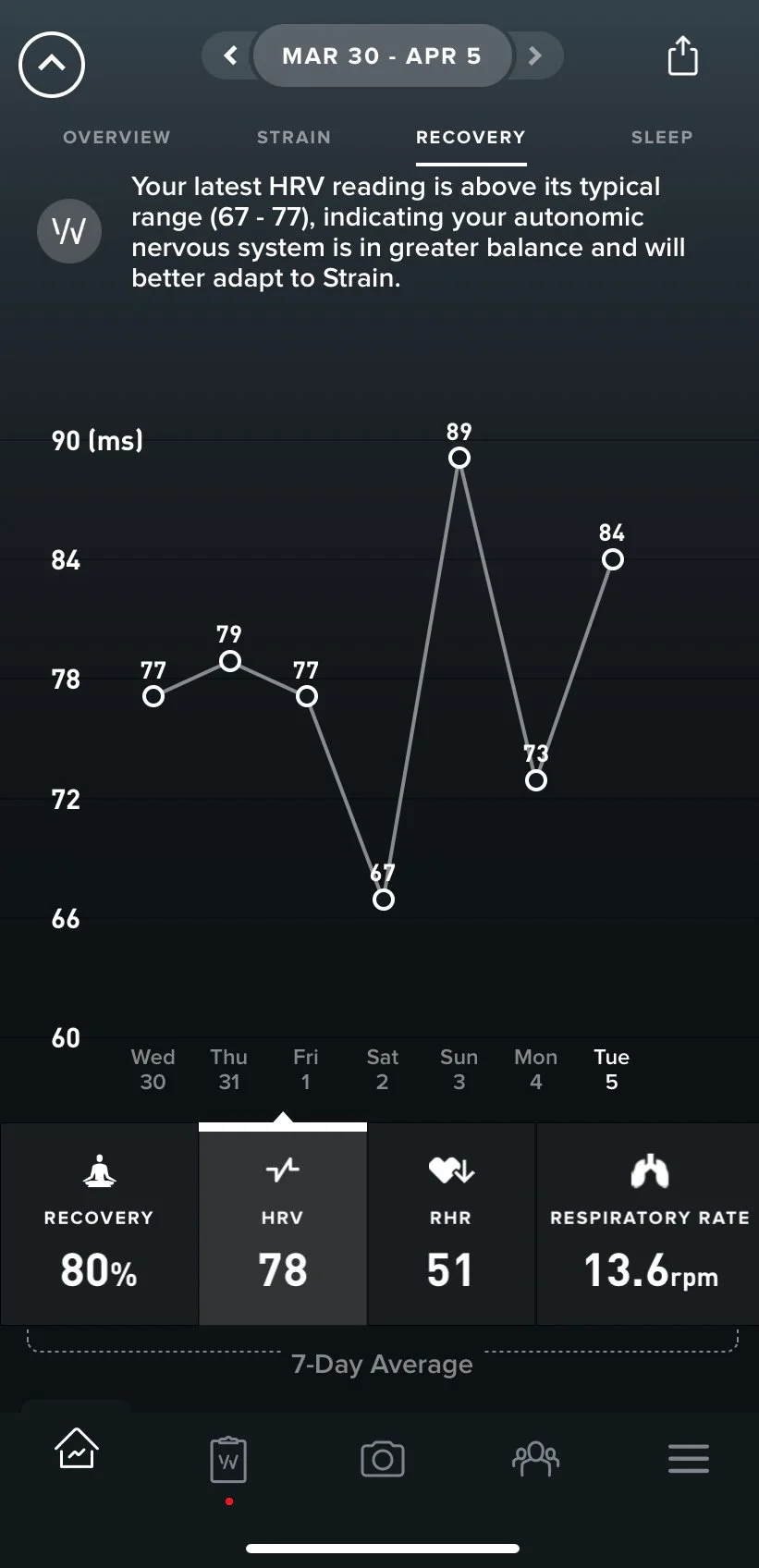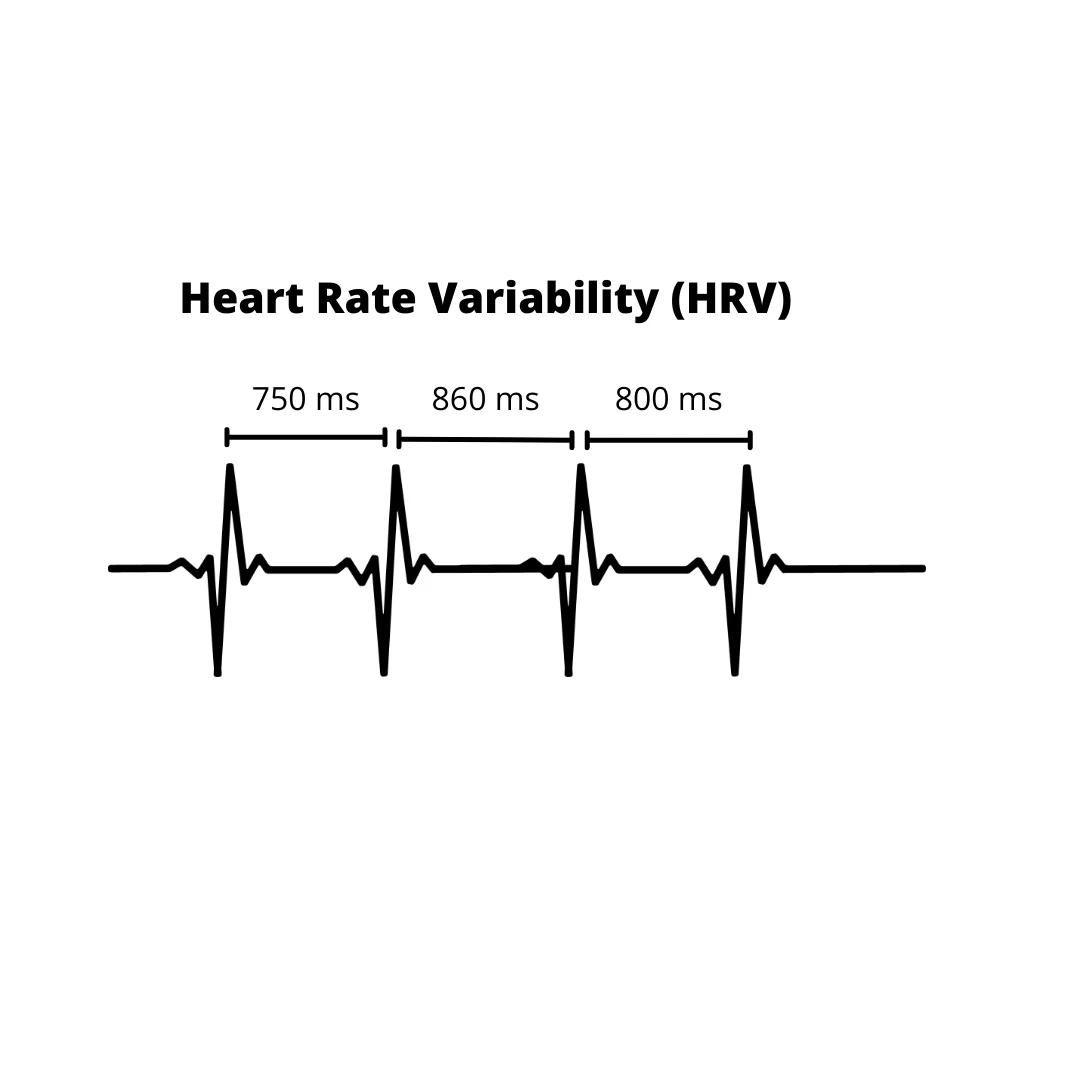The most important health and fitness metric you don’t know about
There are many fitness trackers on the market which are commonly seen on gym goers in the forms of watches, bands, and even rings. Gone are the days when taking your resting heart rate by hand provides you with the best information on physical fitness. Apple, FitBit, Garmin, WHOOP and other fitness tracker companies’ market that their devices can display specific data points revealing your level of health and performance. But what exactly should we as an active population be tracking? Heart rate? Respiratory rate? Sleep cycles? Blood oxygenation? While arguments can be made for each of these listed, one metric is commonly left off the list but may be the most important, and that is heart rate variability (HRV).
Research on HRV in terms of human performance and wellness has increased in the last decade. In this article we will uncover why HRV has grown in popularity and how a better understanding of this data can make you fitter, improve your performance, and enhance your overall health.
The Science of HRV
Heart rate variability is defined as the measurement of the variation between individual heart beats across consecutive cardiac cycles (3). More simply, it is the time between each heartbeat. For example, if an individual’s resting heart rate is 60 beats per minute it is easy to imagine that their heart beats every second on the second for 1 minute. However, this is not how our cardiac cycle operates. Our cardiovascular system is regulated by the autonomic nervous system (ANS), which is more specifically broken down into the sympathetic nervous system (SNS) and parasympathetic nervous system (PNS) (1). The SNS is often referred to as our “Fight or Flight” system, while the PNS is responsible for more steady state activity such as sleep and digestion, among others. The ANS is balanced by the constant regulation of the SNS and PNS (1).
HRV can be viewed as an estimate of an individual’s ANS function (3). The more variability between heart beats indicates a more constant balance between the two systems. Low variability thus indicates that one system, typically the SNS, has taken over. This concept is important when considering an active individual’s recovery, wellness, and fitness. If their body is in a constant state of stress than it is expected to have a decreased ability to recover, adapt, repair, and thrive. Additionally, the ANS has a role in pain, inflammation, and tissue injury. Therefore, suboptimal function can be a predictor of these adverse events (1, 3).
How to use HRV data
Many fitness trackers now monitor HRV on a constant basis. Manufacturers recommend wearing these devices constantly, 24/7, to increase data points and accuracy. Additionally, it may take a couple months of data to truly understand your personal HRV range. Every individual’s HRV ranges are going to be different and should not be compared. Once an individual has a good perspective on their normal HRV, they can use it to effectively track their training and recovery. For example, an athlete tracking their HRV can interpret a low number as an indication they need more time spent on recovery (quality sleep, sub-maximal training, rest, etc.). On the other hand, a high number provides positive feedback that this athlete can confidently train or compete at a high level.
(Photo is via the WHOOP App fitness tracker)

Using this information and correlating it with your behaviors is the key to optimal performance and wellness. Fitness trackers such as WHOOP allow you to “journal” behaviors like screen time before bed, alcohol and caffeine consumption, hydration status, and stress levels. Over time these behaviors can be linked to HRV levels.
Human health, wellness, and performance rely heavily on self-awareness, commitment, and consistency. By utilizing health metrics such as HRV, active individuals and athletes can better understand their bodies to decrease the risk of injury and maximize performance!
For more information on how to improve your performance and decrease pain, contact Dr. Bryan Vranic at Vital Force Physio.
Movement is Vital for a healthy body and Your Body is a Force to be reckoned with,
Dr. Bryan Vranic, PT, DPT, CSCS, Cert-CMFA
This information is not intended to be used as medical advice but for educational purposes only. Please consult your Physical Therapist, Physician or Healthcare Provider for more information.
References
- Holmes K. How to Use Heart Rate Variability (HRV) to Guide Your Training. August 27, 2020. Accessed April 5, 2022. https://www.whoop.com/thelocker/heart-rate-variability-training/
- Hung CH, Clemente FM, Bezerra P, et al. Post-Exercise Recovery of Ultra-Short-Term Heart Rate Variability after Yo-Yo Intermittent Recovery Test and Repeated Sprint Ability Test. Int J Environ Res Public Health. 2020;17(11):4070. Published 2020 Jun 7. doi:10.3390/ijerph17114070
- Williams S, Booton T, Watson M, Rowland D, Altini M. Heart Rate Variability is a Moderating Factor in the Workload-Injury Relationship of Competitive CrossFit™ Athletes. J Sports Sci Med. 2017;16(4):443-449. Published 2017 Dec 1.


